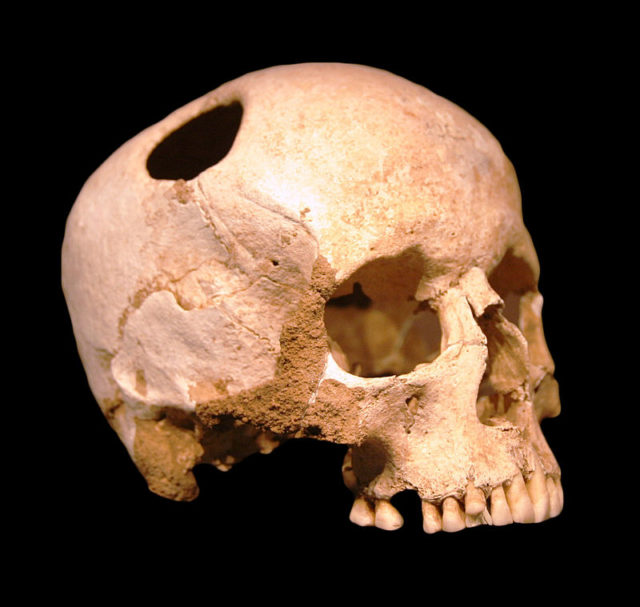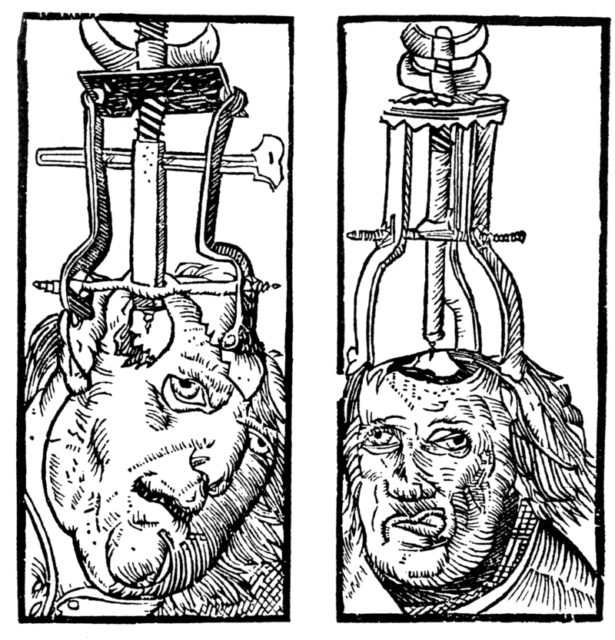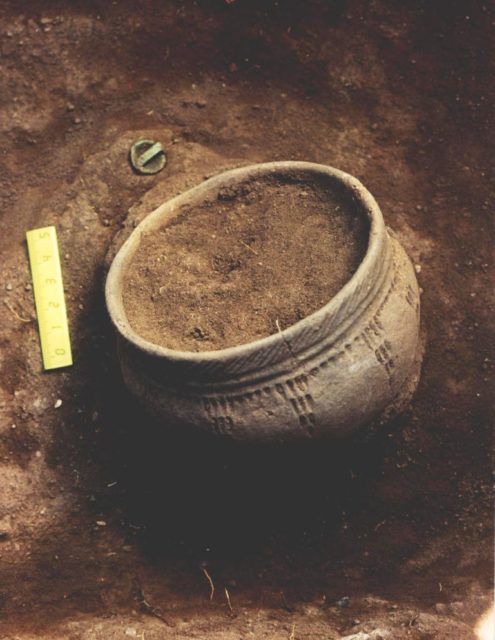A study proposes magic mushrooms, cannabis, and ecstatic dancing were used as ancient anesthetics. Archaeologists discovered a patient who had died between the age of 30 and 40, and are confident that markings on the bones were from a surgical intervention and not from ritualistic practices.
There has been a step by step academic examination into how Bronze Age medics conducted trepanation (drilling or scraping into a human skull) operations in Siberia.
This was done on a male skull that was found last year in the Nefteprovod II burial ground – at the Anzhevsky archaeological location southeast of Kansk in the Krasnoyarsk region.
They thought that this man was buried with the knife and may have lived for a period of time after he had his surgery. The left parietal bone had an opening with obvious signs of bone healing. It also had indications of an inflammatory reaction located on the bone plates.
The archaeologists have a suspicion that his eventual death had been caused by a long-term post-operative inflammation. This man was not the earliest known case of trepanation in Siberia. There are, for instance, some that date back to the Neolithic period.

Trepanated skull, Neolithic Photo Credit
A researcher at the Institute of Archaeology and former surgeon, Dr. Sergey Slepchenko, explained that the key to surgery being successful is the patient’s complete confidence and trust that the surgeon has the necessary knowledge and skills to carry out the operation.
An important element was enabling the patient, in this case, a male from an unknown ancient culture similar to that of the Karasuk people, to enter an altered state of mind during which the pain was minimized.
Plants that were supposed to be used as painkillers in other places than Siberia; it was found that flora was used by indigenous peoples here to alter the state of mind.
There is an interesting number of potential painkillers that were used. For instance, several ethnic groups used thyme and juniper in Shamanic practices. The Nivkhi people burned leaves and wild rosemary sticks. The northern indigenous people use fly agaric mushrooms, a powerful hallucinogen. The most obvious, though, was most likely cannabis.
The consumption of fungi was combined with other Shamanic practices, including ecstatic dancing or drumming. This was likely the method of altering the conscious state of the patient. It was believed to reduce the pain to the extent needed to carry out the surgery.
For the preparation phase of the operation, the archaeologist can only make their best guesses. Nonetheless, based of the form and type of edges on the healing, they have inferred the patient was laying in a supine position, facing to the right.

The surgeon most likely stood face to face with the patient, standing on the left side. Or maybe the surgeon might have secured the head with his left arm or his knees, then operated with his right hand.
The team of archaeologists think that while the surgeon had made the incision an assistant had helped by stretching the skin at the edges of the wound as well as passing the instruments and other materials.
The specialists think that is likely that a wide cut into the bone was made through the skin and the underlying tissue.
Such of the cutting of the scalp was described by Hippocrate’s work around 600 years after this trepanation. After the wound was made, it would have been opened to organize a surgical field.
The aponeurosis and the skin was peeled off the underlying bone. The next phase would have been the bone scraping.
Alterations in the bone as a result of healing prevent the archaeologists from guessing exactly what instrument was used for the trepanning or how it was done.
They can not state that this operation was carried out with a specialized tool. However, several sorts of medical tools existed in Siberia and were widely used for postmortem manipulations. These were the same tools that might have been applied for trepanation.
By observing the form of the hole, it is suggested the tool could have been some type of scraper instead of a knife. The scraping would last until the outermost of the membrane was exposed, after which the trepanation area could have been enlarged in width.
The high survival rate after the trepanation operation in the early times might be explained by the fact that it was mostly done extradurally.
Complications from the surgery such as brain abscess, meningitis, and wound abscess could lead to death. The fact that this patient, and other known individuals, lived for a period of time after the trepanation suggests that the outermost of the membrane stayed intact long enough for the strong signs of the healing to have appeared.
During the operation, the opening would be covered with skin. Some blood would fill the are between the outermost membrane and the inner surface of the aponeurosis. Blood clots prevented further bleeding from the spongy bone that separates the outer and inner bone of the cranium known as the diploe.
Yet the wound could not be too tight, so it would minimize the risk of infection. It is not clear to what sutures or bandages were applied or how the wound was drained.
One of the most dangerous possible complications during the trepanation is the bleeding which happens immediately after the skin incision. When there is further scraping, bleeding from blood vessels from the diploe bone occurs.
It is significant that the outermost membrane stays intact since the damage might cause injuries to the layers between the outermost membrane located under the plates.
To be able to minimize the bleeding and to reduce the pain, the operation has to be done as quickly as possible by a highly skilled surgeon.
It is not clear at all how they would have stopped the bleeding. No written documents are left, yet the specialists suppose that red-hot objects or herbs were used.
The Karasuk culture refers to the group of Bronze Age societies from the Aral Sea to the Yenisei in the east, and south of the Altai Mountains and the Tian Shan, from about 1500 to 800 BC.
The Karasuk were farmers who as well practiced branches of science and technology with properties of metals on a large scale. They are thought to be the first people in Siberia who had used horses for riding.
Archaeologists believe that the brain surgery patient had been from another group from an unknown culture with a similar lifestyle.

The grave in which the trepanned skull was discovered was robbed during ancient times. Not much more than the skull has remained, other than additional fragments of tubular bones of the upper ribs , Siberian Times reported.
There was a custom Karasuk styled knife that was discovered in the grave, yet there was no suggestion that this was the tool used for the surgery. Two stone arrowheads were also found.
The complete study of this reconstruction of the trepanation was published in the International Journal of Osteoarchaeology.
